News Archives : 2012
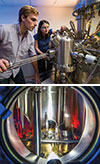
|
Stress corrosion crackingNew experiments, new insightsHigh stresses combined with a corrosive environment can cause critical components inside power plants and other systems to crack and fail, sometimes with little warning. MIT researchers now have new insights into how such “stress corrosion cracking” may be affected by nanoscale disruptions in the crystalline structure of metallic materials. Using novel experimental methods, they showed that mismatches between adjacent crystals can create regions with altered mechanical properties, including hardness. In addition, those defects can change the electronic properties of the surface in the region, making reaction with oxygen more likely and accelerating the pace of corrosion. Ultimately, the MIT researchers hope to define nanostructures that can help prevent this pervasive, insidious form of material degradation and failure. ... more |
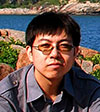
|
NSE’s Yue Fan awarded two prestigious postdoctoral fellowshipsNSE doctoral student Yue Fan has been selected for the 2013 Aneesur Rahman Postdoctoral Fellowship in the Materials Sciences Division of Argonne National Laboratory and the Wigner Fellowship from Oak Ridge national Laboratory. The Argonne National Laboratory Named Fellowships are awarded to candidates who display outstanding ability in scientific or engineering research and who show definite promise of leadership in the research they pursue. The Wigner Fellowship is ORNL's most prestigious fellowship. It provides an opportunity for outstanding early career physical, computational, life, and social scientists and engineers to select and pursue fundamental or applied research in ares of their interest. ... more |
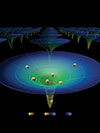
|
Funneling the sun’s energyMIT engineers propose a new way of harnessing photons for electricity, with the potential for capturing a wider spectrum of solar energy.The quest to harness a broader spectrum of sunlight’s energy to produce electricity has taken a radically new turn, with the proposal of a “solar energy funnel” that takes advantage of materials under elastic strain. “We’re trying to use elastic strains to produce unprecedented properties,” says Ju Li, an MIT professor and corresponding author of a paper describing the new solar-funnel concept that was published this week in the journal Nature Photonics. In this case, the “funnel” is a metaphor: Electrons and their counterparts, holes — which are split off from atoms by the energy of photons — are driven to the center of the structure by electronic forces, not by gravity as in a household funnel. And yet, as it happens, the material actually does assume the shape of a funnel: It is a stretched sheet of vanishingly thin material, poked down at its center by a microscopic needle that indents the surface and produces a curved, funnel-like shape. ... more |

|
Buongiorno and McKrell awarded over $400K by CEA, FranceProfessor Jacopo Buongiorno and Dr. Thomas McKrell have been awarded $412,000 by the French Alternative Energies and Atomic Energy Commission (CEA) for a project on transient boiling heat transfer. ... more |
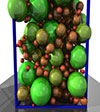
|
Size diversity in cement nanoparticles optimizes packing density to give concrete its strengthConcrete may be one of the most familiar building materials on Earth, but its underlying structure remains a bit of a mystery. Materials scientists and concrete engineers still don’t fully understand exactly how the cement paste that works as glue in concrete hardens during the first hours after water and cement powder are mixed. New technologies are making it possible for researchers in MIT’s Concrete Sustainability Hub to make steady progress toward solving this mystery. First they determined that cement paste is a granular material, where the particles or basic nanoscale units pack together most densely when arranged orderly. A few years later they discovered that the calcium-silicate-hydrate (C-S-H) molecules that make up the basic nanoscale unit of cement have a disorderly geometric arrangement, rather than the orderly crystalline structure scientists had long assumed. ... more |

|
NSE undergraduate Victoria Winters presents winning poster at the APS Division of Plasma Physics Annual MeetingNSE undergraduate Victoria Winters ’14 won one of three Undergraduate Poster Awards at the 54th Annual Meeting of the APS Division of Plasma Physics. ... more |
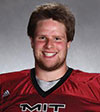
|
NSE Senior Ethan E. Peterson wins National Scholar-Athlete awardEthan E. Peterson ’13 is a Course 22 (Nuclear Science and Engineering) and Course 8 (Physics) senior on MIT Men’s Varsity Football. He has started on the MIT offensive line for the last three seasons and became co-captain last season. ... more |
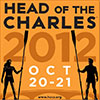
|
NSE’s women rowers race in 2012 Head of the Charles RegattaNSE’s graduate students Lauren Ayers and Sara Ferry participated in the 2012 Head of the Charles Regatta held on October 20 and 21. Ferry was part of the MIT Lightweight Women's Alumnae Crew competing on Saturday. The MIT crew finished with a time of 19 minutes, 23 seconds (19:23.924) a little under 3 minutes behind the winning University of Michigan team against 34 entries. Ayers competed in the Lightweight Women's Eight race, the final race in the Regatta on Sunday afternoon. The MIT team finished in 17 minutes, 50 seconds (17:50.809), just under 52 seconds behind the winning Radcliffe Crew. 2012 HOCR website |

|
Profile: Ju Li explores new nanomaterialsWorking from the scale of atoms on up, he designs materials for future energy applications.Growing up in China as the son of two engineers, Ju Li says he was initially more interested in pure science than in hands-on engineering. “I was pretty fascinated by theoretical physics when I was a kid,” he recalls. But in the end, he found a way to combine the theoretical with the practical: studying how atoms and electrons behave and interact in a way that allows him to design new materials from the atomic level on up. Li, who holds a joint appointment as a professor in MIT’s departments of materials science and engineering (DMSE) and nuclear science and engineering (NSE), has ended up in a field of research that could transform the way energy is generated, stored and used — in everything from batteries tinier than mitochondria to huge nuclear powerplants. ... more |

|
Probing the mysteries of cracks and stressesAnalysis of molecular-level fracture and stress mechanisms could have broad implications for understanding materials’ behavior.Diving into a pool from a few feet up allows you to enter the water smoothly and painlessly, but jumping from a bridge can lead to a fatal impact. The water is the same in each case, so why is the effect of hitting its surface so different? This seemingly basic question is at the heart of complex research by a team in MIT’s Department of Nuclear Science and Engineering (NSE) that studied how materials react to stresses, including impacts. The findings could ultimately help explain phenomena as varied as the breakdown of concrete under sudden stress and the effects of corrosion on various metal surfaces. ... more |
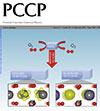
|
MIT researchers shed light on atomic level factors responsible for the chemical expansion effectNSE's Yildiz along with a team of MIT researchers and collaborators in Ireland and Japan, demonstrated, through computer simulations, that the chemical expansion of a cerium oxide compound is tied to an increase in charge localization around positively charged cerium ions. Their paper, "Charge localization increases chemical expansion in cerium-based oxides," made the cover of the Sept. 21, 2012, edition of Physical Chemistry Chemical Physics (PCCP). ... more |
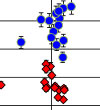
|
MIT research team wins Best Paper Award at NUTHOS-9MIT’s Greg DeWitt, Thomas McKrell, Jacopo Buongiorno, Lin-wen Hu and Rae Joon Park won the Best Paper Award at the 9th International Topical Meeting on Nuclear Thermal-Hydraulics, Operation and Safety (NUTHOS-9) for their paper entitled "Experimental Study of Critical Heat Flux with Alumina-water Nanofluids in Downward-Facing Channels for In-Vessel Retention Applications”. ... more |

|
NSE students honored by Collegiate Coaches Rowing AssociationNSE's Lauren Ayers '12 and Elizabeth Wei '12 are among eleven MIT women rowers named National Scholar Athletes for 2012 by the Collegiate Rowing Coaches Association (CRCA). ... more |
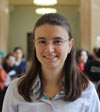
|
NSE’s Yildiz wins 2012 Charles W. Tobias Young Investigator AwardBilge Yildiz, Associate Professor of Nuclear Science and Engineering, is the winner of the 2012 Charles W. Tobias Young Investigator Award. Established in 2003 by the Electrochemical Society (ECS), the biennial Tobias Award recognizes outstanding scientific or engineering work in fundamental or applied electrochemistry or solid-state science and technology by a young scientist or engineer. ... more |
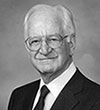
|
Professor emeritus Elias P. Gyftopoulos dies at 84Elias P. Gyftopoulos, Ford Professor Emeritus of Nuclear Engineering and Mechanical Engineering, died peacefully at his home in Lincoln, Mass., on Saturday, June 23, 2012. He was 84 years old. ... more |
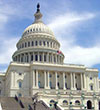
|
MIT fusion science students advocate for fusion funding with CongressEleven MIT fusion science students scheduled and met with over 26 Senate and House offices on June 14th. They expressed concern over legislation in the Senate Appropriations Committee that threatens funding for the domestic fusion program, including the shutdown and dismantling of the Alcator C-Mod tokamak at MIT and significant reductions in support for U.S. fusion graduate students and post-docs. ... more |
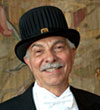
|
PSFC's Peter Catto receives honorary doctorate from ChalmersPeter Catto, Assistant Director at the Plasma Science and Fusion Center and leader of the Fusion Theory and Computation research group, received an honorary doctorate from Chalmers University of Technology in a ceremony held on May 12 in Gothenburg, Sweden. ... more |

|
Congratulations 2012 Graduates!Meet NSE's newest graduates. ... more |
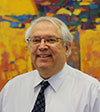
|
NSE’s Mujid Kazimi wins Kuwait PrizeNSE’s Professor Mujid Kazimi has been awarded the 2011 Kuwait Prize in Applied Sciences by the Kuwait Foundation for the Advancement of Science (KFAS). The field of applied sciences selected for the 2011 award is nuclear power technology. ... more |

|
MIT awarded over $1.7M in DOE Nuclear Energy University Programs grants and $450K in graduate student fellowshipsTwo of 47 newly-funded Department of Energy research projects are led by professors in the Department of Nuclear Science and Engineering at MIT. Under its Nuclear Energy University Programs (NEUP) umbrella, the DOE has awarded $36.2 million in support of projects in four fields: fuel cycle research & development; reactor concepts research, development & demonstration; nuclear energy advanced modeling & simulation; and transformative research. Both the MIT projects fall into the fuel cycle research & development category. ... more |

|
NSE graduate students Black, Boyd, Shaner win NEUP FellowshipsFirst-year graduate students Brad Black, William Boyd and Samuel Shaner in the Department of Nuclear Science and Engineering at MIT are among 31 graduate students across the country who have won fellowships through the Department of Energy’s Nuclear Energy University Programs (NEUP). A fourth student, Geoffrey Gunow, who will enroll in NSE at MIT in September, was awarded a NEUP fellowship while still a student at the University of Michigan. ... more |
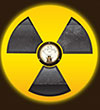
|
A new look at prolonged radiation exposureA new study from MIT scientists suggests that the guidelines governments use to determine when to evacuate people following a nuclear accident may be too conservative. The study, led by Bevin Engelward and Jacquelyn Yanch and published in the journal Environmental Health Perspectives, found that when mice were exposed to radiation doses about 400 times greater than background levels for five weeks, no DNA damage could be detected. Current U.S. regulations require that residents of any area that reaches radiation levels eight times higher than background should be evacuated. However, the financial and emotional cost of such relocation may not be worthwhile, the researchers say. ... more |
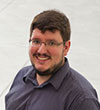
|
NSE's Felix Parra wins DOE Early Career Research Program awardTokamaks are one of the most promising fusion energy concepts. Assistant Professor Felix Parra in the Department of Nuclear Science and Engineering at MIT has been awarded an Early Career Research Program grant to support his project “Spontaneous Generation of Rotation in Tokamak Plasmas”. ... more |
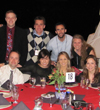
|
MIT to host 2013 American Nuclear Society Student ConferenceThe MIT American Nuclear Society Student Section has won the bid to host the 2013 ANS Student Conference in Spring of 2013. A team of more than thirty undergraduate and graduate students from the Department of Nuclear Science and Engineering at MIT crafted the successful proposal to bring the conference back to MIT. ... more |

|
MIT researchers answer questions about fusion powerMIT researchers discuss the things we've learned about fusion in the past decade, how long it's likely to take for fusion to power your home, the biggest problems fusion researchers are working to solve, and why it's important to continue funding fusion projects. They also delve into the specifics of tokamak operation, like dealing with disruption events and the limitations on reactor size, and provide some insight into fusion as a career... more |
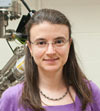
|
MIT research team wins Somiya Award for International CollaborationMaterials Science and Engineering Professor Harry Tuller and Nuclear Science & Engineering Professor Bilge Yildiz are among the 2012 recipients of the International Union of Materials Research Societies (IUMRS) Somiya Award along with three international collaborators... more |
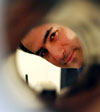
|
Alan Jasanoff is designing imaging sensors that could help reveal the brain’s inner workingsAfter finishing his PhD in molecular biophysics, Alan Jasanoff decided to veer away from that field and try looking into some of the biggest questions in neuroscience: How do we perceive things? What happens in our brains when we make decisions? After a few months, however, he realized that he didn’t have the tools he wanted to use — so he decided to start making his own. Jasanoff, who recently earned tenure in MIT’s Department of Biological Engineering, now specializes in developing novel brain-imaging agents that can reveal information more detailed than other human brain-imaging techniques such as fMRI and PET, and more comprehensive than traditional neuroscience measurements such as microscopy and electrode recordings. With the new tools, he is also beginning to explore some of the fundamental questions that first drew him into neuroscience. |
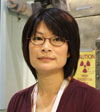
|
Dr. Lin-wen Hu wins MIT Excellence Award for Innovative SolutionsLin-wen Hu "transformed" the MIT Nuclear Reactor Laboratory (NRL) at a time when it was in need of a new mission, according to her nominator, David E. Moncton, director of the NRL. Dr. Hu was presented the Institute's 2012 Award for Innovative Solutions by President Susan Hockfield. The award citation reads: "As the associate director of research, development, and utilization at the Nuclear Reactor Laboratory, our first awardee helped redirect the lab’s mission at a critical moment. Just as its existing program in medical and biological research was being phased out, she had the vision to see emerging opportunities in the field of nuclear materials. She took the initiative to build a team at MIT capable of supporting highly sophisticated research, which led to significant growth in the use of the reactor for in-core experiments. She also reached out to colleagues across the country, enabling MIT to take on an important role as partner of the Advanced Test Reactor National Scientific User Facility, a program strongly supported by the U.S. Department of Energy. In setting the Nuclear Reactor Lab on the path to vibrant future, she has also helped to ensure that MIT will continue to attract the best graduate students in nuclear engineering.". |

|
Professor Bilge Yildiz wins MISTI Global Seed Fund grantBilge Yildiz, the Norman C. Rasmussen Assistant Professor of Nuclear Science and Engineering, has been awarded a MISTI Global Seed Fund grant to collaborate with John Kilner, B.C.H.Steele Professor of Energy Materials at Imperial College, United Kingdom. Their project will examine surfaces of cathodes in solid oxide fuel cells at the atomic level. more |
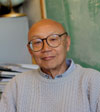
|
NSE’s Professor Sidney Yip wins 2012 Robert Cahn AwardEmeritus Professor Sidney Yip has been awarded the 2012 Robert Cahn Award. The award, given by the Journal of Nuclear Materials, recognizes an outstanding scientist who has a high scientific profile in the field of nuclear materials, the ability to communicate science to a broad audience, and demonstrated interest in breaking down barriers between different scientific disciplines. .... more |
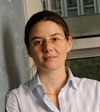
|
NSE’s Paola Cappellaro wins AFOSR Young Investigator AwardAssistant Professor Paola Cappellaro has been awarded an Air Force Office of Scientific Research (AFOSR) grant to investigate a bottom up approach to quantum information devices that aims at overcoming current challenges to scalability .... more |

|
NSE's Professor Mujid Kazimi elected to the National Academy of EngineeringFive MIT researchers — Mary Boyce, William Delaney, Elazer Edelman, Mujid Kazimi and K. Dane Wittrup — are among the 66 new members and 10 foreign associates elected to the National Academy of Engineering (NAE) on Feb. 9. MIT President Emeritus Charles M. Vest, NAE president since 2007, announced the new members today. Election to the National Academy of Engineering is among the highest professional distinctions accorded to an engineer. Academy membership honors those who have made outstanding contributions to “engineering research, practice or education, including, where appropriate, significant contributions to the engineering literature.” Mujid S. Kazimi SM ‘71, PhD ‘73, Tokyo Electric Power Company Professor of Nuclear Engineering, professor of mechanical engineering, and director of the Center for Advanced Nuclear Energy Systems, was cited for contributions to technologies for the nuclear fuel cycle and reactor safety. more |
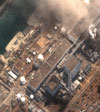
|
Frontline : Nuclear AftershocksFRONTLINE correspondent Miles O'Brien speaks with NSE faculty about the options for alternative energy sources, and questions about whether a disaster like the one at Fukushima could happen in the United States; and travels to three continents to explore the revived debate about the safety of nuclear power.video |

|
Dr. Alan Hanson named Executive Director of International Nuclear Leadership Education ProgramDr. Alan S. Hanson (PhD ’77) has been appointed Executive Director of a new international executive-level nuclear leadership education course in the Department of Nuclear Science and Engineering. Over the next year Dr. Hanson will collaborate with NSE Professors Jacopo Buongiorno and Richard Lester to develop the course, which will focus on the strategies, operational practices, and technologies required to develop a successful nuclear energy program. .... more |
